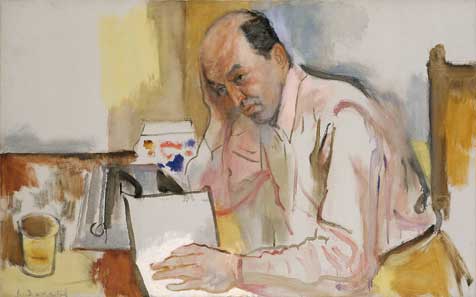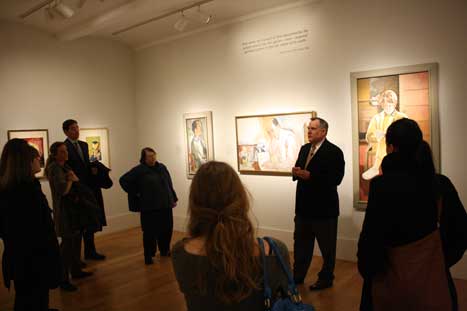Portrait of Clement Greenberg by René Bouché

Clement Greenberg / René Bouché / Oil on canvas, 1955 / National Portrait Gallery, Smithsonian Institution; gift of Denise Bouché Fitch
Art critic and public intellectual Clement Greenberg was one of the most important advocates for American abstract painting after World War II. Championing such artists as Barnett Newman, Clyfford Still, and especially Jackson Pollock, Greenberg provided the art-historical background to what he called "abstract expressionism."
Pugnacious and driven by a sense of cultural mission, Greenberg, in his criticism and in articles like "'American Type' Painting" (1955), became the model of the engaged intellectual, making as many enemies as he did friends. As he said, "The first obligation of an art critic is to deliver value judgments."
The art world eventually turned on Greenberg, but his four volumes of collected writings are an unmatched survey of American art and culture in the mid-twentieth century. René Bouché's 1955 portrait of Greenberg was praised as an abstraction "softening the edges of representation."
David Ward, historian at the National Portrait Gallery, recently discussed this portrait of Clement Greenberg by René Bouché at a Face-to-Face portrait talk. The work is displayed on the museum’s third floor, in the exhibition “Twentieth-Century Americans.”
>> Listen to David Ward’s Face-to-Face talk on Clement Greenberg (33:22)
Face-to-Face occurs every Thursday evening at the National Portrait Gallery. The next talk is tomorrow (March 11), when Amy Henderson, historian at NPG, speaks about Katharine Hepburn and her four Oscars. The talk runs from 6:00 to 6:30 p.m. Visitors meet the presenter in the museum’s F Street lobby and then walk to the appropriate gallery.
